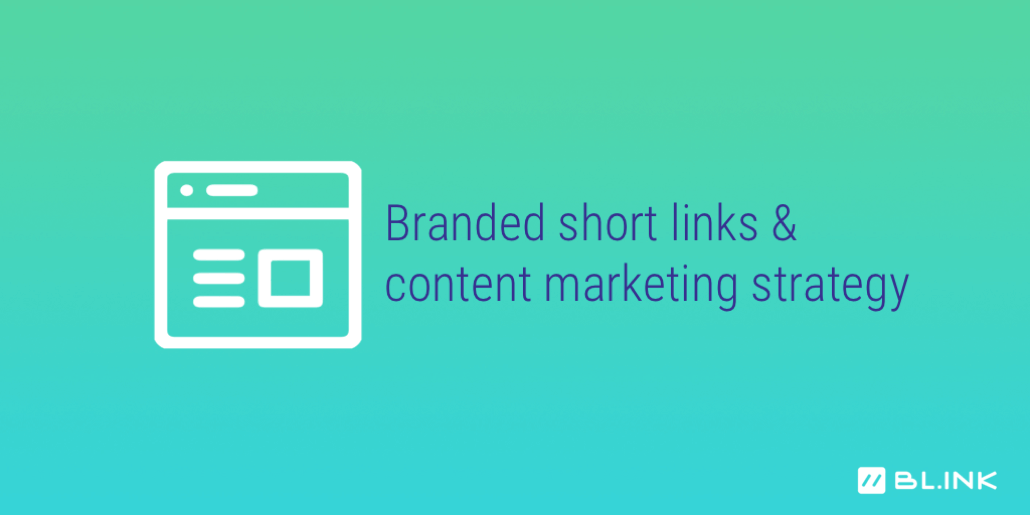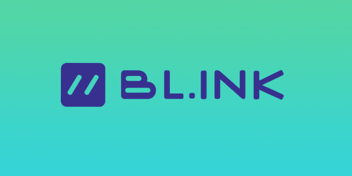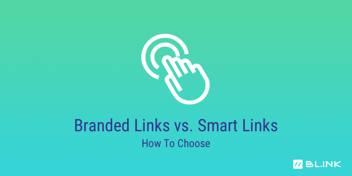
Listen to this blog
How to use branded links in your content marketing strategy
If you stop to think about it, branded links should be a marketing no-brainer. Your brand is in the spotlight AND you get additional analytics — what’s not to love about that? Unfortunately, branded links are often overlooked as a meaningful, memorable way to convey both valuable content and brand impressions.
Read on to learn how to branded links can help you improve your content strategy results.
What are branded links?
Branded links are exactly what they sound like — short domain names or URLs you use to share content or to connect with target audiences. Anyone can register a branded short link easily on BL.INK here.
But not all branded links are equal. Research shows users are far more likely to click on branded links that contain real words and/or include a brand’s name.
What is a content marketing strategy?
The Content Marketing Institute defines content marketing as, “creating and distributing valuable, relevant, and consistent content to attract and retain a clearly-defined audience — and, ultimately, to drive profitable customer action.”
A content marketing strategy should
- Define your business objectives and how content marketing will support those objectives
- Identify your target audiences with whom you wish to connect
- Include an understanding of audience needs and interests, and where on social media you are most likely to find and engage with them
- Articulate a set of ideas that you wish to convey (over time), as a means to build interest and trust with your audiences, and
- Have a cadence of communications to these audiences, so that you can cultivate a reliable rhythm of interactions with them
As you construct your own content strategy, you should also ask yourself:
- Does this content embody my brand message(s)?
- Does this content solve a problem or address a set of needs for our target audience?
- Does this content provide useful and valuable information for our target audience?
- Does this content advance a business initiative and my key messages?
- How will I measure success? What Key Performance Indicators (KPIs) will help me understand my content strategy’s effectiveness?
Producing content is content marketing, but the central themes, format, and distribution of content are where content strategy comes in.
How to use short links to improve content marketing results
Short links can help content marketers improve their content marketing performance by:
- Reinforcing brand messages with links that are meaningful and memorable
- Providing easy-to-digest analytics that capture insights from the entire marketing ecosystem
So, how do you do start using short links in your content marketing strategy?
Use branded links that capture your brand AND key messages
With ever-shrinking attention spans, marketers have less time to make an impression. When every pixel has a purpose, your links become high-value real estate. Whether a link appears in social posts, news pieces, podcasts, videos, or on printed materials, simply swapping out a long link for a short, branded link can drive your message home and entice people to click.
By using a suite of branded domains, you can make links that contain your brand and your message in-line with your content strategy.
For example, mybrand.news, mybrand.social, mybrand.support, and mybrand.video all convey useful information to the audience about what content lies at the other end of the link; these short links also help a busy content marketer unite various forms of content under central themes.
Tag your links to measure content performance
When a content marketer creates a piece of content and distributes it across multiple channels, you can bet that they will soon be asked, “How did that content perform? Is it working?” followed by, “What should we do next?”
Answering these questions isn’t always a straightforward process. Information about content performance lives in multiple places. Content marketers might have to hunt for engagement stats on several different social posts, look at web analytics data, and perhaps export data from advertising platforms – all to cobble together an assessment of what happened, once a single piece of content was released into the wild.
Enter tags. When you tag your links with the content category or campaign, you can filter and quickly evaluate performance. Whether looking at a single piece of content, or all of the content in a category, your BL.INK dashboard will show you what’s working, and what’s not. This gives the content marketer agility to optimize ongoing campaigns and improve results.
When you use short links for every piece of content produced, you can spot macro-trends and use them to your advantage. For example, you might see that certain times of day have the most click activity, regardless of what time a post was published or an email was sent. You may notice that Q&A blogs get more clicks from Facebook than other channels. You may observe that one content category just isn’t “clicking” with your audience. All of these insights can influence your marketing strategy and tactics and help you achieve greater results. More bang for your content marketing buck? Yes, please!
Ready to step up your content marketing strategy?


